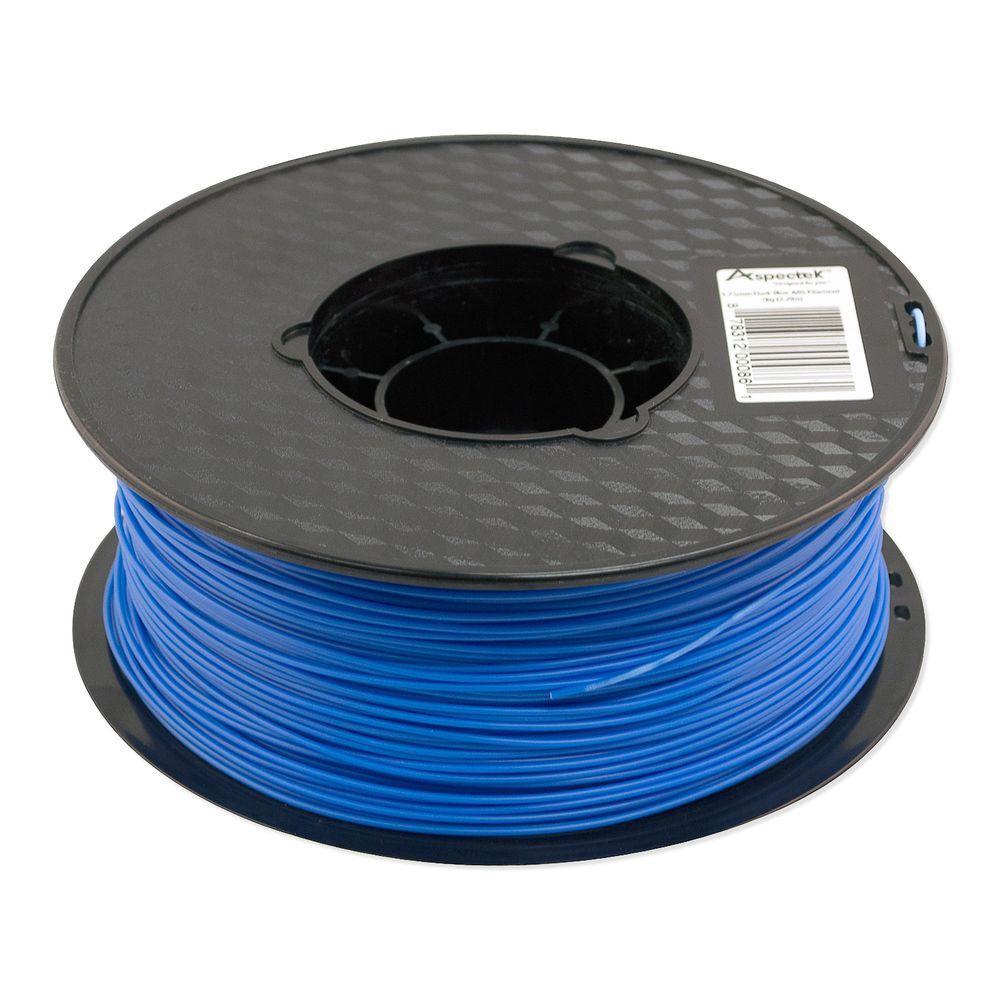Most common types of filament: (you can print these on any machine)
Filament is usually sold in 1 Kilo spools; and a kilo of filament will print a lot of parts! Most brands are around $20-30 per kilo. I order from Amazon. Hatchbox, Inland, eSun are good value brands. Our school has a very active makerspace serving about 300 students (7-12). We go through about 15 rolls per year.

- PLA
- This will be 90-100% of your prints as a new user.
- Prints at 180-220C, bed at 60C
- Easiest to print with, lowest melting point. Reasonably strong. Very stiff.
- Not appropriate for high-temp environments (like inside your car)
- Will turn chalky with prolonged uv exposure
- PETG
- Prints at 220-240C, bed at 70-90C
- Strength and temp resistance is more than PLA, less stiffness.
- Tuning print settings can be challenging. Tends to leave ‘strings’ on the prints unless settings are spot on. Printing too hot can ruin your print bed or hot ends with a PTFE (teflon) lining (which is all the cheap printers).
- TPU/flexible
- Prints at 220C, bed at 50-60C
- Stretchy, bendy, rubbery, VERY strong prints
- Not all printers will work with flexible filaments. Must have a “fully constrained” filament path, and even then, “bowden” extruders may not work well. I’ve had great success with the Flashforge and Prusa machines and flexible filament.
Other/Advanced filaments
- ABS
- Prints at 230-250C, bed at 100-110C
- Will probably warp and crack when printing, unless you use an enclosure
- Stronger than PLA or PTEG. Great temp resistance and part longevity
- Can be smoothed and welded with acetone
- Requires a printer that can heat the bed all the way to 110C
- Emits smells while printing
- Nylon (aka. PA or Polyamide, various blends have different details)
- Prints at 260-280C, bet at 90-110C
- A step up from ABS in every way. Higher temperature resistance, much higher strength, somewhat flexible.
- Requires an “all metal hot end”, probably requires an enclosure
- Filament absorbs moisture from the air. Must be stored in desiccant.
- Colors options are limited, but you can dye the finished print
- PC-polycarbonate
- Prints at 280-300C, bed at 120+C (as hot as you can go)
- Strongest, hottest, most durable, most rigid 3d printing plastic.
- Requires an enclosure, probably with a heater inside it
- Smells bad while printing.
- Filled
- Prints like parent material.
- Usually PLA, with particles added: Carbon fiber, wood dust, glow-in-the-dark pigment, etc.
- ‘Soft’ or ‘matte’ finish on parts, sometimes layer lines disappear. Carbon-Fiber-Nylon is available. Very strong parts
- Abrasive! Requires a wear-resistant (ie. steel) nozzle
- Dissolving
- Used for dissolving support materials in dual-extruder printers
- HIPS
- Prints like ABS
- Dissolves in “Limonene” citrus-based solvent
- PVA
- Soft, rubbery filament. Difficult to print with.
- Absorbs moisture from the air in minutes. Must be stored in desiccant and dried before use.
- Dissolves in water


